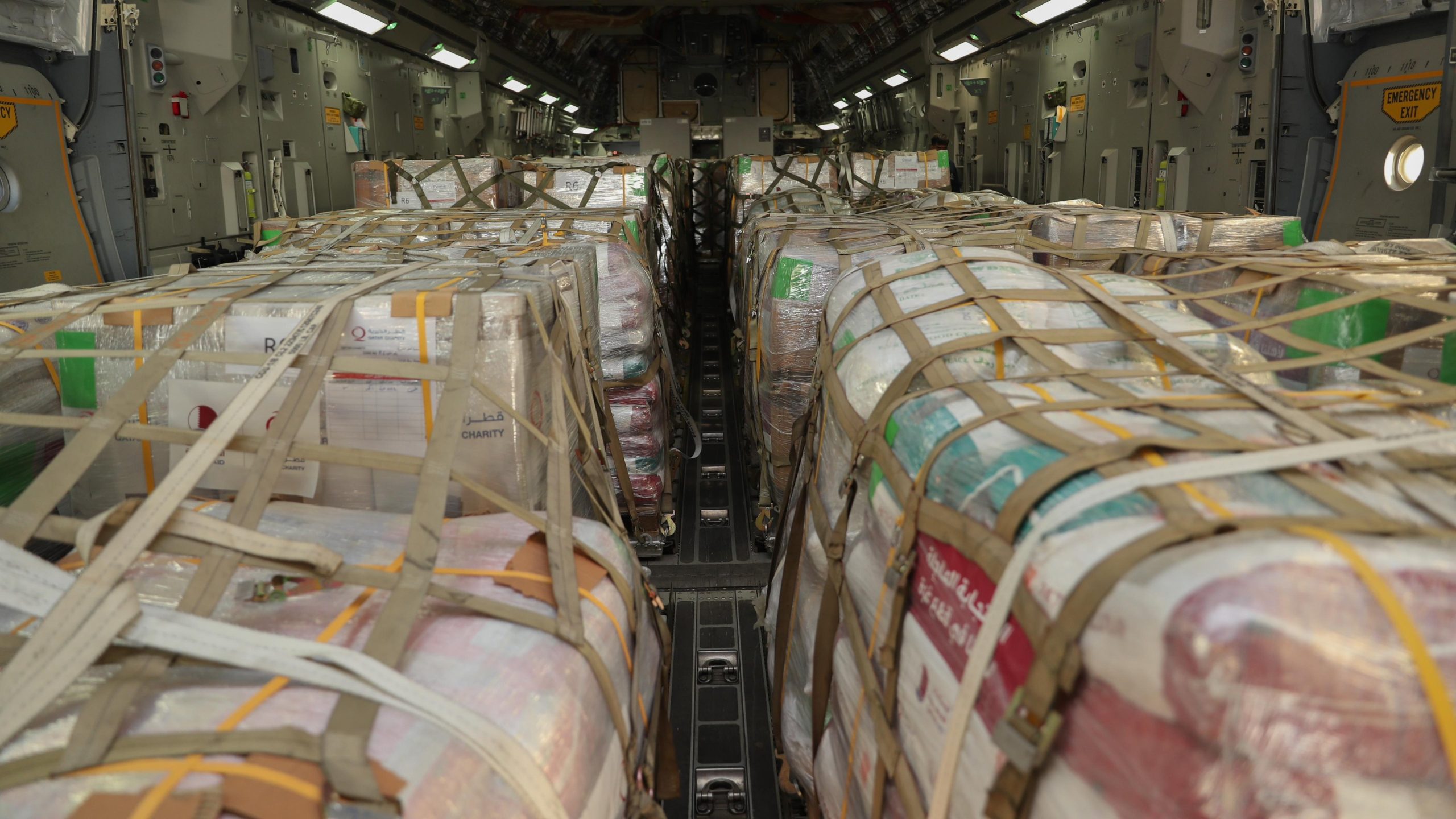Gaza’s population are at what the UN described as an “imminent risk of famine” while trying to survive the lack of access to clean water and worsening sanitation conditions.
Qatar’s humanitarian aid to Gaza surpassed 2,000 tonnes on Monday after the Gulf state sent the latest batch of vital equipment and goods.
Doha sent two aircraft of the Qatari Armed Forces to Egypt’s El Arish City, where aid is being collected before crossing over to Gaza via the Rafah Crossing.
“The assistance includes food items provided by Qatar Charity to be further transferred to Gaza, bringing the total number of the aircraft to 68 with the total quantity of 2,063 tonnes of aid,” the Gulf state’s foreign ministry said in a statement.
The aid comes against the backdrop of Qatar’s humanitarian efforts in Gaza amid the ongoing Israeli genocide that has killed over 25,000 Palestinians and wounded more than 63,000 others.
On December 13, Qatar pledged $50 million at the Global Refugee Forum in Geneva as an initial humanitarian aid package for Gaza.
On December 18, Sheikh Tamim donated QAR 100 million (around $27.5 million) to back the local “Palestine Duty” charity campaign. The campaign gathered a total of QAR 200,048,750 (around $55 million) in donations for Gaza.
On December 3, Qatar’s Amir launched an initiative to sponsor 3,000 orphans and treat 1,500 injured Palestinians from the Gaza Strip. Under the initiative, the Gulf State is supervising the transfer of the wounded in coordination with Egypt, in preparation for treatment in Doha.
Qatar has evacuated at least 401 Palestinians from Gaza since late last year under the initiative, including those in need of medical treatment and others with special cases.
The evacuations come as Gaza’s collapsed health sector struggles to keep pace with thousands of injured Palestinians under the ongoing Israeli bombardment and complete siege.
Only 16 out of Gaza’s 36 hospitals are partially functioning with a significant shortage in medical supplies and beds, according to the United Nations’ flash update on Monday. The hospitals are reaching 206% of their inpatient rates and 250% of their intensive care units.
Aid has been barely reaching Gaza’s 2.2 million population amid Israel’s chokehold over the entry of aid trucks. On Monday, only 66 trucks of aid crossed the Rafah and Karem Abu Salem crossings, a number that is much lower than the pre-war average of 500 daily trucks.
The aid trucks do not contain fuel as Israel has limited its entry into Gaza.
Gaza’s population are at what the UN described as an “imminent risk of famine” while trying to survive the lack of access to clean water and worsening sanitation conditions.
Malnutrition is particularly high among children and pregnant and breastfeeding women in Gaza, where miscarriages increased by 300% since the beginning of the war.
Northern Gaza has remained isolated as Israel continued to deny the entry of aid agencies. The UN said it planned 29 missions to the north in the first two weeks of January and only seven have been accomplished.
“The remainder of the missions were denied access by the Israeli authorities. This is a significant increase in denials compared with the previous months,” the UN said.
The lack of aid in northern Gaza and the destruction of the area have forced the population to grind animal feed to make bread.
Israel had ordered approximately 1.1 million people to evacuate northern Gaza to the south on October 12, 2023, and occupation forces raided the Al-Shifa Medical complex, the largest in Gaza, the following month.
The north has since been an isolated territory by Israel and those who fled to the south have not been able to return to the area. Despite the forced evacuation to the south, Israel has continued its relentless bombardment and field executions in all areas of Gaza.
Khan Younis in southern Gaza has been under non-stop Israeli bombardment and attacks by occupation forces, targeting hospitals and displaced populations.
Israel intensified their attacks near the Nasser and Al-Amal hospitals, with the Palestinian Red Crescent unable to maintain contact with its crew.







